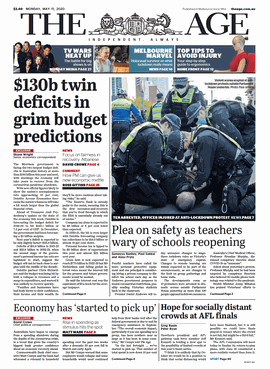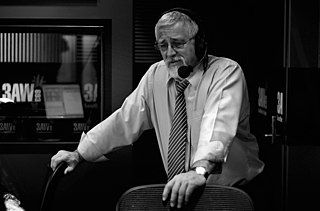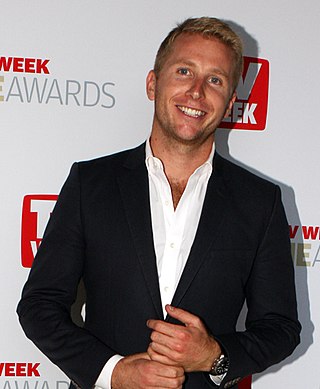The Age
In 1964, a twist of fate saw Macdonald appointed to the position of managing director of The Age when his grandfather and chairman of Age publisher David Syme & Co. Limited, Oswald Syme, misheard his grandson and thought he was threatening to leave the paper unless he was given the position. He was actually suggesting the role of marketing manager. He served as managing director until 1983.
Also in 1964, the board of David Syme & Co. appointed Macdonald's stepfather, Colonel Neill, as Chairman when Oswald retired.
In his early years at The Age, Macdonald rebuffed takeover bids by, among others, Frank Packer, his own cousin Rupert Murdoch, and The Times owner Roy Thomson. To maintain the newspaper's independence, Macdonald created the Syme-Fairfax Partnership with John Fairfax & Sons, which allowed the Syme Trust to continue after Oswald's death in 1967. The partnership ran from 1966 until 1983, when Fairfax bought out the remaining shares in David Syme and Co. and Macdonald stepped down as managing director.
In 1966, after two years of battles, Macdonald replaced deeply entrenched editor Keith Sinclair and appointed Graham Perkin, while Macdonald assumed the role of editor-in-chief, serving until 1970. Macdonald and Perkin guided the paper through a transformation from its staid, conservative roots to what news magazine The Bulletin called "Australia's Most Important Newspaper".
Macdonald and Perkin set out to make The Age the best, most influential and trusted journal, through quality journalism, encouragement and leadership. Their partnership was described by John Jost in Playboy as, "a perfect union of editorial and newspaper management skills". [6] They believed in challenging decisionmakers and informing the public so that readers of The Age could make up their own minds about issues.
Macdonald's tenure saw sweeping changes at The Age, including the addition of bylines to stories and the introduction of columnists, such as highly respected Phillip Adams. An independent ombudsman was hired and a corrections column was launched, entitled "We Were Wrong". Columnists like Nancy Dexter broke ground for women journalists with her column "Nancy Dexter Takes Note" discussing issues of the day, including the fight for equal pay, domestic violence and abortion law reform. Macdonald and Perkin introduced talented cartoonists to readers of The Age, including Les Tanner, Ron Tandberg, Bruce Petty, Michael Leunig, John Spooner and Peter Nicholson.
In 1981, Macdonald prodded the Victorian Government to establish the Norris Inquiry into press ownership in Victoria, as he believed that a significant investment by John Fairfax & Sons in the Herald and Weekly Times group, the Melbourne-based rival of The Age, created a conflict of interest. [8]
Macdonald stepped down as managing director in 1983. That same year, the Syme–Fairfax partnership ended as the Syme family found it impossible to continue its financial support of the partnership.
Academia
Having lectured on journalism at Curtin and Murdoch Universities, Macdonald accepted a position in 1987 as associate professor at the Royal Melbourne University of Technology (later known as RMIT), serving until 1995, when he accepted a faculty position at Boston University. Chilean professor Claudio Veliz, under Chancellor John Silber, headhunted Macdonald for the University Professors program, which already included Nobel Prize laureates Elie Wiesel and Saul Bellow. He became chair of the Department of Journalism within a year.
Macdonald established special summer programs to help orient foreign students in Boston, including American Journalism and American Society, in order to expose the students to different accents and new ideas. Macdonald also created The Boston University Great Debate series, inspired by Oxford–Cambridge debating. These debates were broadcast live on WBUR public radio, and became so popular that the final one during Macdonald's tenure was broadcast on C-SPAN, an arrangement that continued after Macdonald's departure.
In 1999, Macdonald accepted the position of Boston University's international programme in London, where he helped to establish new overseas study programs in Auckland and Sydney. He co-founded the European Study Abroad Program (EUSA), a company which organises internships for thousands of American students a year in Dublin, Grenoble, Madrid, Paris, Sydney, London, Los Angeles and Boston.
Other work
Macdonald served as President of Collingwood Football Club from 1982 to 1986. He appointed Leigh Matthews, who later coached Collingwood to the Premiership in 1990, ending a 32-year title drought.
Before leaving The Age, Macdonald was appointed by Victorian Premier John Cain Jr. to chair Victoria's 150th Anniversary Board from 1982–85, which organised the yearlong activities. He also represented Victoria on the Australian Bicentennial Authority (ABA) from 1983–85, but resigned, with the support of Prime Minister Bob Hawke, over his concerns about financial irregularities at the ABA.
In 1983, he turned down an invitation from then Chairman of the ABC, Ken Myer, to become the first Managing Director of the Australian Broadcasting Corporation (ABC). [9]
In 1990, he began hosting ABC Radio 774/3LO's leading current affairs show between 8:30 until 10am every weekday. He successfully increased ratings until his departure in 1995.









